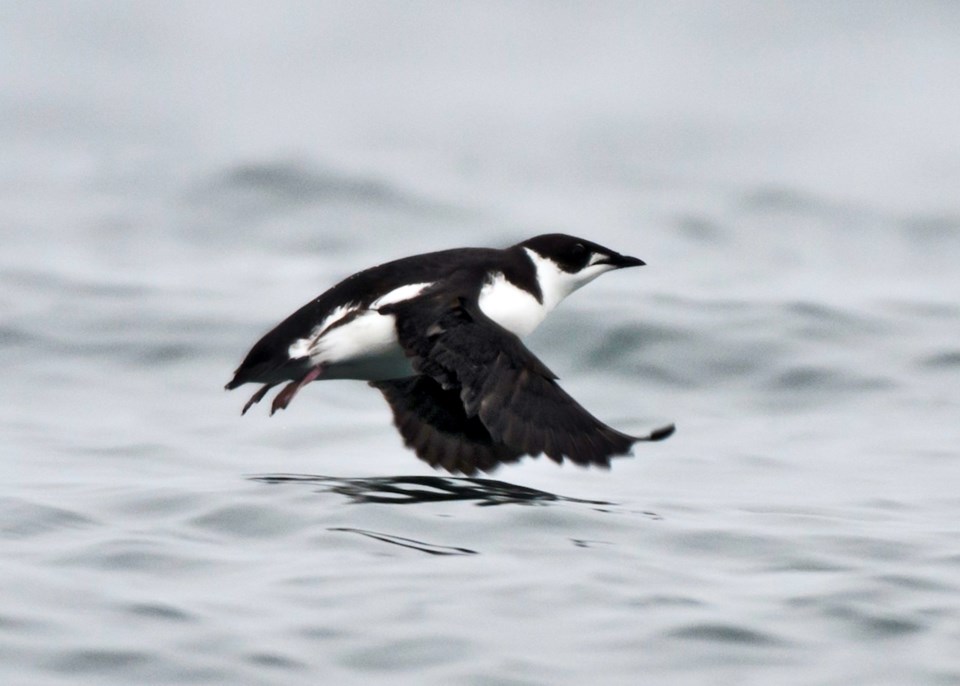In the mossy platforms of the tallest old growth trees, marbled murrelets nest. The small seabirds – auks, in the same family as puffins and murres – have seen serious population declines in recent years. The species was listed as “threatened” under the federal Species at Risk Act in 2003.
On Dec. 2, the province ordered that forest areas will be set aside as marbled murrelet habitat in the Sunshine Coast Natural Resource District (SCNRD) and Atl’ka7tsem / Howe Sound.
The order sets minimum thresholds for habitat retention areas for B.C. Crown lands on Vancouver Island and southern mainland coast areas. In the SCNRD, a total of 34,234 hectares of ancient forest was determined to be suitable nesting habitat for these birds. The minimum threshold area identified for protection includes 3347 hectares in the Sechelt land unit and 6502 hectares in the Jervis land unit area.
Dan Bouman, former Sunshine Coast Conservation Association (SCCA) executive director told Coast Reporter the order follows 30 years of efforts to protect and rebuild murrelet populations. Efforts began with the work of the group “Friends of Caren,” he said. In the early 1990s, researchers working with the group, John Field and Paul Jones, documented the first active marbled murrelet nest in the highlands of the Coast’s Caren Range.
When the SCCA was established in 1996, it took up the cause to protect the habitat of the murrelet. “We knew the species was in rapid decline from the mid-1990’s on, due to the impacts of logging, but we did not know the specifics of the habitat they were using,” said Bouman.
In its Dec. 20 newsletter, the SCCA said that it will be working with the provincial government in the new year to spatially define the habitat areas. Bouman said that in such a process, it will be “impossible” to not infringe on some forest harvesting rights.
“The final layout might go on for some time, but logging in certain areas will have to stop,” said Bouman.
“Habitat protection is going to help stabilize the murrelet population. It will open the door in the future to recolonization and recovery of the species, we hope.”
Along with actual nesting sites, buffer areas are important when identifying locations to be protected Bouman said. “Where you have a forest edge, that is where the predators are; the red squirrels, the jays, ravens and crows that like to eat eggs. A successful nest will likely be away from a forest edge.
“Today we know these habitat areas need to be set up so there is a forested buffer around the nesting habitat to minimize contact with predators.”
As part of its efforts to protect the species, the SCCA also participated in the province’s 2019 strategic review panel process that investigated the state of its old growth forests. That panel recommended that the BC government defer logging of old growth forests while they determine how to protect and manage these forests for biodiversity and ecological values. The Government of B.C.’s website identifies the main threat to the species terrestrial nesting habitat within the province as the loss and fragmentation of old growth forests.
The marbled murrelet’s nests and eggs are legally protected under BC's Wildlife Act and federal legislation.



